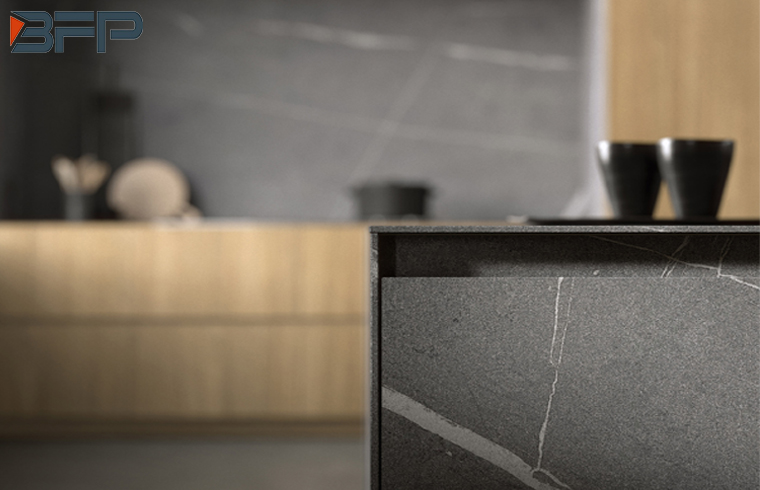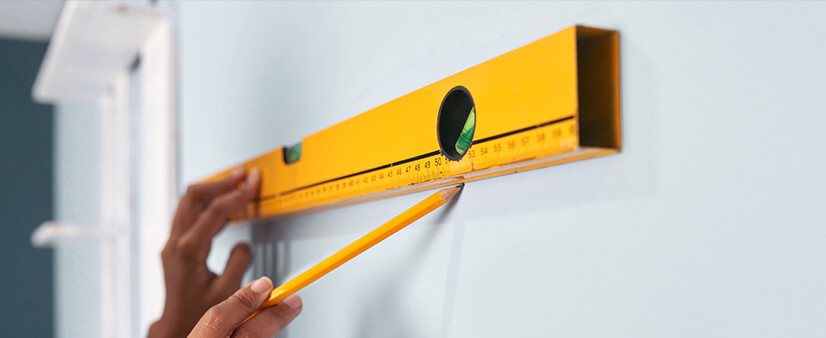Custom whole-house cabinetry is an excellent solution for homeowners looking to maximize space, enhance aesthetics, and create a cohesive design throughout their home. This type of cabinetry includes various components such as wardrobes, bookcases, bathroom vanities, shoe cabinets, TV units, and more. In this article, we will delve into the different aspects of custom whole-house cabinetry, including its components, design process, pricing, how to choose a reliable cabinet supplier, and the steps involved in customization and installation.

Custom whole-house cabinetry encompasses a wide range of storage solutions tailored to fit specific areas and functions within a home. Key components include:
1.Wardrobes: Custom wardrobes are designed to fit the exact dimensions of a bedroom, offering storage solutions that cater to personal clothing and accessory needs. They can include features such as built-in drawers, adjustable shelves, and specialized compartments for shoes, jewelry, and other items.
2.Bookcases: Custom bookcases are designed to fit specific wall spaces in living rooms, home offices, or libraries. They can be open or closed, with options for glass doors to display collectibles and books attractively.
3.Bathroom Vanities: Custom bathroom vanities maximize storage space and enhance the functionality of a bathroom. They can include under-sink cabinets, drawers, and even linen storage, all tailored to fit the bathroom’s layout.
4.Shoe Cabinets: Custom shoe cabinets are designed to organize and store footwear efficiently. They can be integrated into entryways, closets, or mudrooms, and may include adjustable shelves, pull-out drawers, and seating for ease of use.
5.TV Units: Custom TV units provide a central focus for entertainment areas. They can include storage for media equipment, books, and decorative items, and can be designed to hide wires and cables for a clean look.
6.Kitchen Cabinets: Kitchen cabinetry is crucial for organizing cooking utensils, food, and appliances. Custom kitchen cabinets can be designed to fit the specific layout and style of the kitchen, offering maximum efficiency and aesthetic appeal.
7.Laundry Room Cabinets: These cabinets provide storage solutions for detergents, cleaning supplies, and laundry baskets. Custom designs can optimize small spaces, ensuring functionality and organization.
8.Home Office Cabinets: For home offices, custom cabinetry can include desks, filing cabinets, and storage for office supplies, all tailored to create an efficient and productive workspace.
9.Garage Cabinets: Custom garage cabinets help in organizing tools, sports equipment, and other items, turning a cluttered space into a well-organized area.

The design process for custom cabinetry involves several critical steps:
1.Needs Assessment: Understanding the specific needs and preferences of the homeowner is the first step. This includes considering the types of items to be stored, the style preferences, and any special features required.
2.Space Measurement: Accurate measurements of the spaces where the cabinets will be installed are crucial. This ensures that the cabinetry fits perfectly and utilizes the available space efficiently.
3.Conceptual Design: Using the gathered information, designers create conceptual designs. These designs include layout plans, 3D renderings, and material selections. Homeowners can visualize the final product and make adjustments as needed.
4.Material Selection: The choice of materials significantly impacts the durability and aesthetics of the cabinetry. Options range from various types of wood to laminates, glass, and metal finishes. The selection is based on the desired look, budget, and functional requirements.
5.Customization Features: Incorporating custom features such as lighting, hardware, and organizational accessories can enhance the functionality and appearance of the cabinetry. Features like soft-close drawers, pull-out shelves, and integrated lighting are popular choices.
6.Design Integration: Ensuring that all cabinetry components harmonize with the overall interior design of the home is essential. This involves coordinating colors, styles, and finishes to create a cohesive look.
The cost of custom cabinetry can vary widely based on several factors:
1.Materials: High-quality materials such as solid wood and premium hardware will increase the cost. Cheaper alternatives like MDF or laminate can reduce expenses.
2.Design Complexity: More intricate designs with custom features and detailed finishes will be more expensive than simpler, standard designs.
3.Size and Scope: The size of the cabinetry and the number of units required also affect the price. Larger projects with multiple custom pieces will naturally cost more.
4.Installation: Professional installation is an additional cost but ensures that the cabinetry is installed correctly and securely.
5.Location: Costs can also vary depending on the geographical location, with prices typically higher in urban areas compared to rural ones.
6.Labor Costs: The expertise and experience of the craftsmen also play a role in pricing. Highly skilled labor may come at a premium but ensures superior quality and durability.

Selecting a reputable supplier is critical to ensure the quality and durability of custom cabinetry:
1.Research and Reviews: Look for suppliers with positive reviews and testimonials. Online platforms and word-of-mouth recommendations are useful resources.
2.Portfolio and Experience: Review the supplier’s portfolio to assess their experience and the quality of their previous work. Experienced suppliers are more likely to deliver high-quality products.
3.Customization Options: Ensure the supplier offers a wide range of customization options to meet your specific needs.
4.Customer Service: Good communication and customer service are essential. The supplier should be responsive and willing to work closely with you throughout the design and installation process.
5.Warranty and Support: Check if the supplier offers warranties on their products and post-installation support. This provides peace of mind and protection for your investment.
6.Site Visits: Visiting showrooms or past projects can provide a tangible sense of the supplier’s quality and craftsmanship.
The process of customizing and installing whole-house cabinetry involves several stages:
1.Initial Consultation: This includes discussions about the homeowner’s needs, preferences, and budget. Measurements and initial design concepts are also part of this stage.
2.Design Finalization: Detailed designs and material selections are finalized. The supplier provides quotes and timelines.
3.Manufacturing: Once the design is approved, the cabinetry is manufactured according to the specifications. This stage can take several weeks depending on the complexity of the project.
4.Pre-Installation Preparation: The installation site is prepared, which may involve removing old cabinetry and ensuring the area is ready for new installations.
5.Installation: Professional installers fit the cabinetry into place, ensuring everything aligns correctly and functions smoothly. This stage includes adjustments and final touches.
6.Final Inspection and Handover: After installation, a final inspection is conducted to ensure everything meets the design specifications and quality standards. The homeowner is then given a walkthrough of the new cabinetry, including maintenance tips.
7.Post-Installation Support: Reliable suppliers offer post-installation support to address any issues that may arise and to ensure customer satisfaction.
Maintaining the longevity and appearance of custom cabinetry involves regular upkeep and care. Using appropriate cleaning products and techniques can prevent damage and keep the cabinetry looking new. Periodic checks for any wear and tear, especially in high-use areas, can help address issues before they become significant problems. Clients should also consider investing in protective measures, such as drawer liners and countertop protectors, to preserve the quality of the materials. By taking these steps, homeowners can ensure their custom cabinetry remains a durable and attractive feature in their home, providing functionality and aesthetic value for many years.

For those looking to enhance the functionality and aesthetic appeal of their custom cabinetry, there are several additional considerations to keep in mind. Incorporating innovative storage solutions, such as pull-out shelves, rotating carousels, and hidden compartments, can significantly improve the usability of the cabinets. Additionally, integrating smart home technology, such as automated lighting and remote-controlled doors, can add a modern touch and increase convenience.
Lighting plays a crucial role in the overall effectiveness of cabinetry. Properly placed lighting can highlight the beauty of the cabinets, making it easier to find and organize items. Options include under-cabinet lighting, interior cabinet lighting, and adjustable track lighting, each serving different purposes and enhancing the functionality of the space.
Customization also extends to the choice of hardware and finishes. Clients can select from a wide range of handles, knobs, and pulls, available in various styles and finishes to match the overall design theme. The finish of the cabinetry itself, whether it be matte, glossy, or textured, can significantly impact the look and feel of the space.
Moreover, considering future needs and potential changes in lifestyle is important when designing custom cabinetry. Flexible designs that allow for easy reconfiguration or expansion can ensure that the cabinetry remains functional and relevant as needs evolve. This foresight can save time and money in the long run, making the investment in custom cabinetry even more worthwhile.
Custom whole-house cabinetry offers a tailored solution to maximize space, improve functionality, and enhance the overall aesthetic of a home. By understanding the components, design process, pricing, and installation steps, homeowners can make informed decisions and achieve the desired outcome. Partnering with a reliable supplier ensures the quality and longevity of the cabinetry, making it a worthwhile investment for any home. For those looking to transform their living spaces with custom cabinetry, reliable suppliers are ready to assist with expert design, quality materials, and professional installation services. Through careful planning, material selection, and collaboration with experienced professionals, custom whole-house cabinetry can significantly elevate the comfort, efficiency, and beauty of any home.
We employ cookies to analyze website traffic and enhance your browsing experience. Data securely aggregated, privacy protected. See Privacy Policy for details.